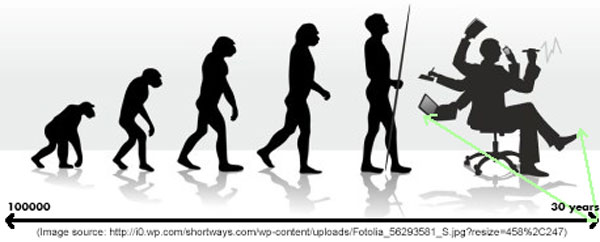A World of Digital Mutants?

For people in their 50's like me, the evolution of digital technology has been surprising, overwhelming, disrupting and overwhelming. I had not even seen a television set till I entered senior college, had seen the computer only in SciFi and James Bond movies let alone touch it. I never thought I would ever make a film, simply because my family did not have deep pockets. For us, even owning a telephone was a luxury, and no thought of a mobile phone ever crossed our minds. I remember the time when I was first introduced to a computer in 1989; I was almost afraid to touch it. I remember how gingerly I used the mouse. I bought my first computer in 1992, which was a 386, with a 120 MB hard drive and a 4 MB RAM! And when there came along a 1.2 GB hard drive, we thought it could not get better than this. For the last about 100,000 years, we, the Homo sapiens have evolved with nature. We have got used to the sun, the moon, the weather, and the sunrise and sunset diurnal cycle. We fee



